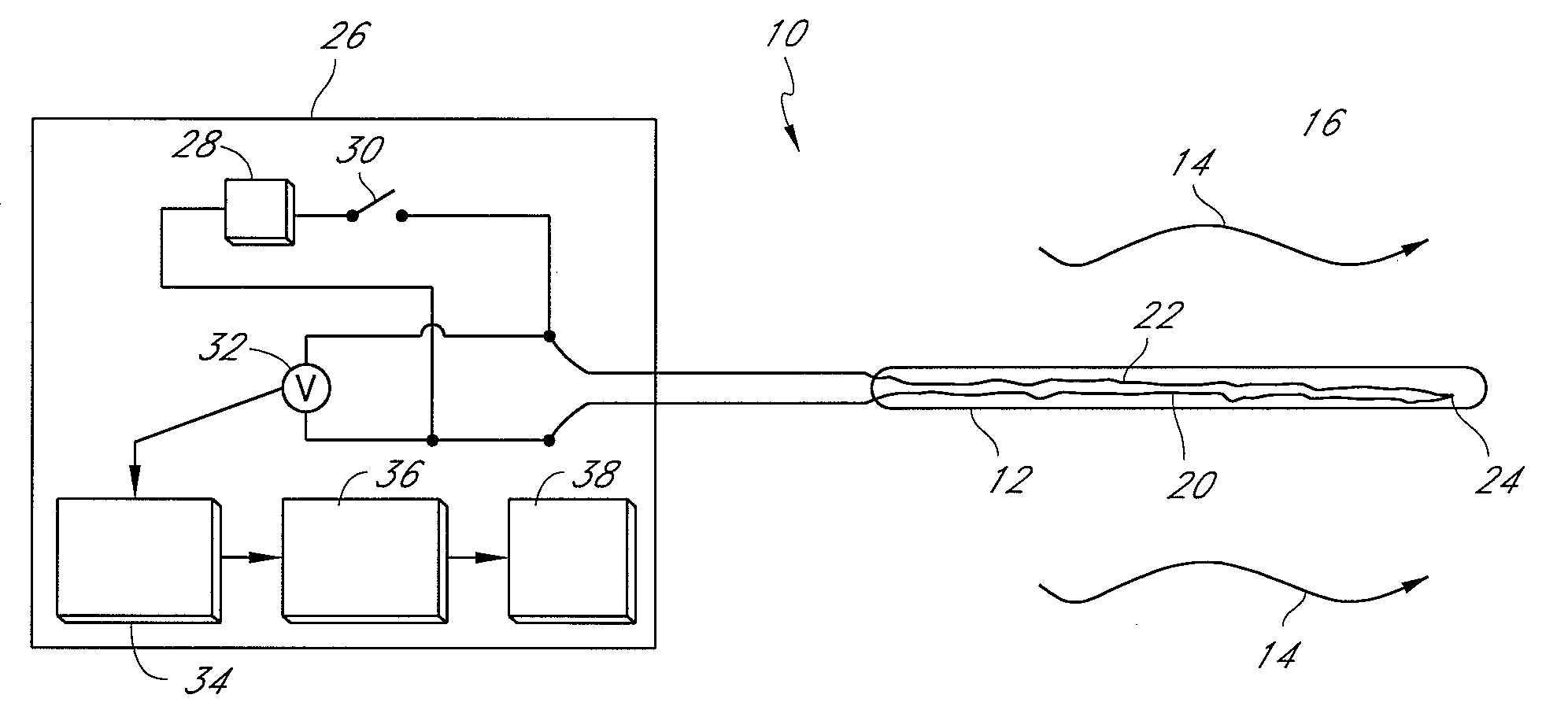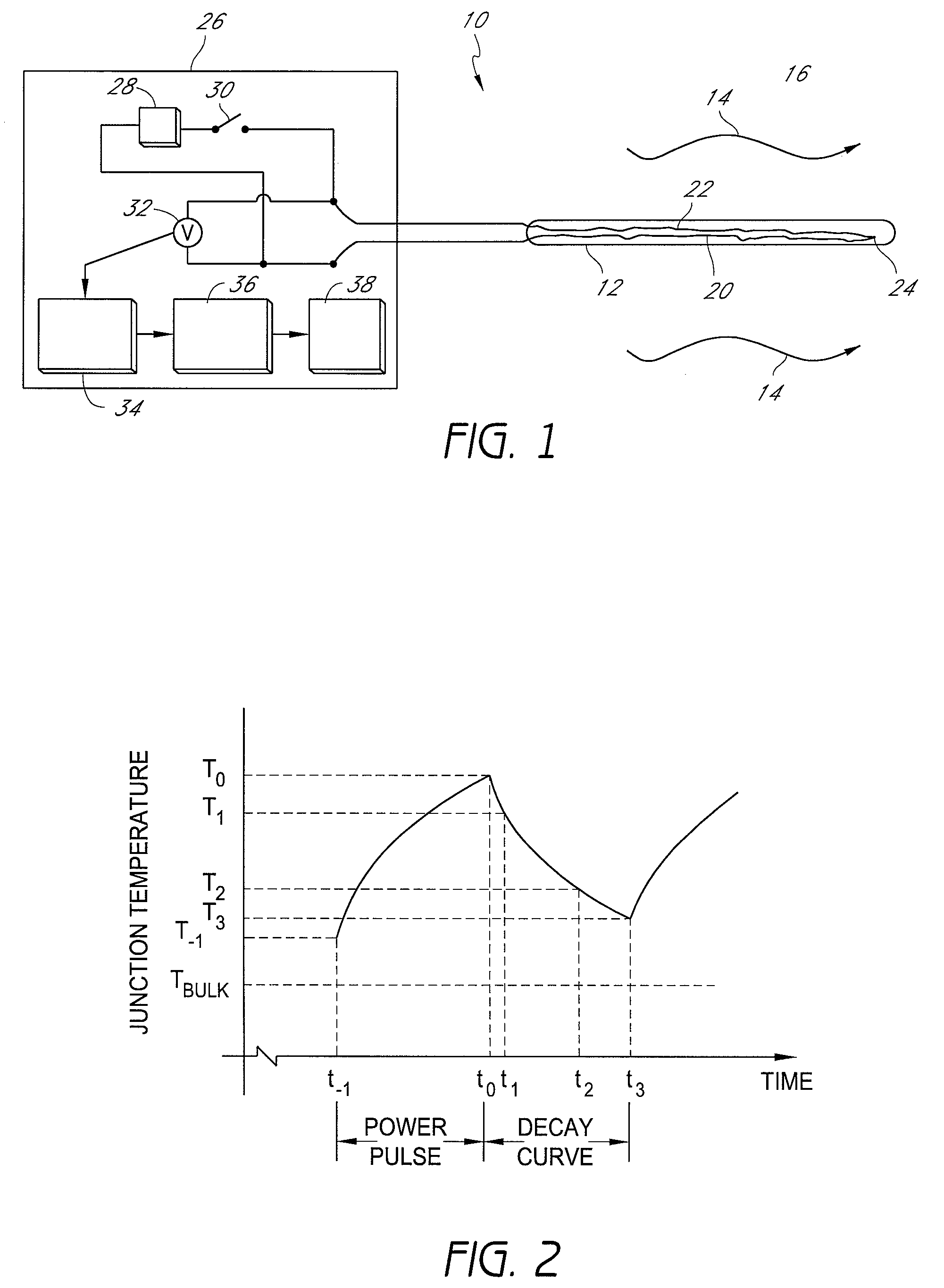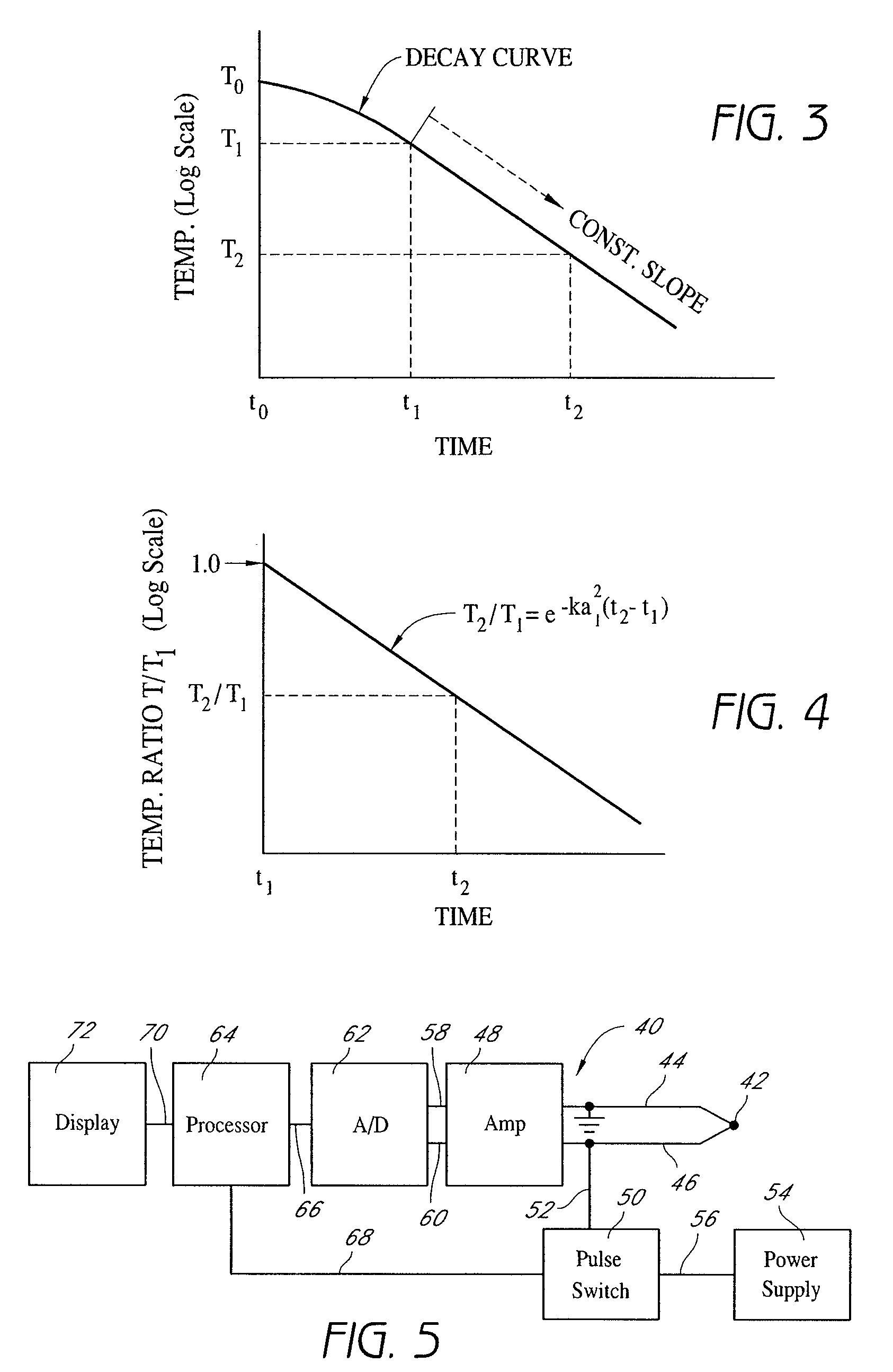Device for measuring permeate flow and permeate conductivity of individual reverse osmosis membrane elements
a reverse osmosis membrane and permeate conductivity technology, applied in the field of measuring devices and systems, can solve the problems of inability to meet the requirements of current technology for commercial ro units, inability to measure the permeate flow and permeate conductivity of individual elements, and inability to achieve the effect of uniform element performance through the system, so as to improve system performan
- Summary
- Abstract
- Description
- Claims
- Application Information
AI Technical Summary
Benefits of technology
Problems solved by technology
Method used
Image
Examples
first embodiment
[0093]Referring to FIG. 6, a sheath type thermocouple probe 74 is best illustrated. The probe 74 includes a sheath outer body 76 ending in a closed tip 78. A first calibration wire 80 is formed to have a relatively low electrical resistance by forming the wire 80 from a highly conductive material and / or a large wire diameter. A second calibration wire 82 is formed to have a relatively high electrical resistance by forming the wire 82 from a poor conductive material and / or a small wire diameter.
[0094]A junction 84 is formed adjacent the tip 78 and the wire 82 is grounded to the tip 78 and hence the sheath body 76. The tip 78 is locally heated adjacent the junction 84. The local heating of the tip 78 is accomplished by applying a relatively high voltage across the low resistance wire 80 and the sheath body 76. The current thus flows through the wire 80 to the junction 84 with negligible resistance heating. From the junction 84, the current flows through the high resistance wire 82 to ...
second embodiment
[0095]a sheath type thermocouple probe 86 is illustrated in FIG. 7. The probe 86 includes a sheath body 88 with a tip 89. A first low resistance calibration wire 90 is connected at a junction 92, just prior to the tip 89, to a high resistance wire portion 94 which is grounded to the tip 89. A second low resistance calibration wire 96 is also grounded to the tip 89.
[0096]The local heating of the tip 89 during the applied power pulse is accomplished by applying a relatively high voltage across the wires 90 and 96. Due to the high electrical conductivity of the wires 90 and 96, the only significant resistance heating occurs in the high resistance wire portion 94 adjacent the tip 89. The temperature sensing of the probe 86 is accomplished by utilizing the Seebeck effect between the wires 90 and 96. The wire 96 also can be eliminated and the voltage then can be applied across the wire 90 and the sheath body 88.
[0097]A third sheath type thermocouple probe embodiment is designated generall...
embodiment 108
[0098]Another sheath type probe embodiment 108 is illustrated in FIG. 9. The probe 108 includes a sheath body 110 having a tip 112. A pair of relatively low resistance wires 114 and 116 are connected adjacent the tip 112 by a portion of high resistance wire 118. The tip 112 is locally heated by applying a relatively high voltage pulse across the pair of wires 114 and 116 which resistance heats the portion 118 to in turn heat the tip 112. Temperature sensing of the probe 108 again is accomplished by utilizing the Seebeck effect between the pair of wires 114 and 116.
PUM
| Property | Measurement | Unit |
|---|---|---|
| length | aaaaa | aaaaa |
| length | aaaaa | aaaaa |
| time | aaaaa | aaaaa |
Abstract
Description
Claims
Application Information
 Login to View More
Login to View More - R&D
- Intellectual Property
- Life Sciences
- Materials
- Tech Scout
- Unparalleled Data Quality
- Higher Quality Content
- 60% Fewer Hallucinations
Browse by: Latest US Patents, China's latest patents, Technical Efficacy Thesaurus, Application Domain, Technology Topic, Popular Technical Reports.
© 2025 PatSnap. All rights reserved.Legal|Privacy policy|Modern Slavery Act Transparency Statement|Sitemap|About US| Contact US: help@patsnap.com



